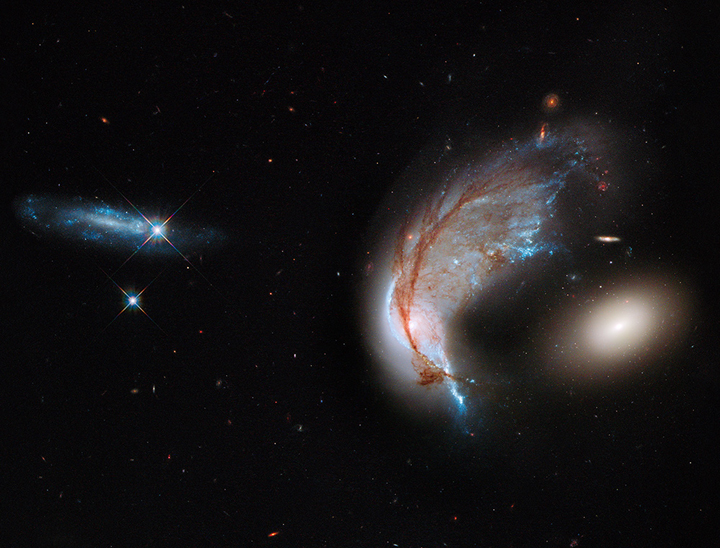A York University PhD student is being recognized for his breakthrough discovery that is helping us to better understand our own place in the universe — and that our Milky Way isn’t alone in being a “bully.”

George Conidis, a Toronto astrophysics student at the university, is being awarded the Mitacs Award for Outstanding Innovation–PhD in Ottawa on Tuesday. Mitacs is a Canadian non-profit organization that supports innovation across the country and helped fund Conidis’s research over the past year and a half.
The research found that the Milky Way — along with Andromeda, our big next door neighbour with which we’re on a collision course (no need to panic: it’s not expected to take place for another 4 billion years or so) — was essential in influencing the movement of galaxies in our local neighbourhood. And other galaxies can do the same.
“Basically, our galaxy — the Milky Way — and Andromeda bullied around the neighbours,” Conidis told Global News from Toronto’s Pearson Airport where he was awaiting his flight to head to Ottawa to receive the award.
“I think the Milky Way has been a disobedient galaxy,” he said.
Conidis developed pattern recognition software and applied it to millions of galaxies in order to find those that live in a neighbourhood like ours. Applying that code, he used a telescope in the Sierra de San Pedro Martir Mountains in Mexico and successfully identified 174 similar neighbourhoods.
READ MORE: Hubble spies galaxies from 13.2 billion years ago
Conidis explained it like this, “If you think of our cosmic neighbourhood as a coffee table, and the galaxies as being coffee coasters, researchers have long believed that they stand on end, but our research shows that the galaxies are actually spinning at an angle.”
Though the study of astronomy has been around since ancient times, the existence of galaxies — islands of stars — was only confirmed in 1923. Since then, many questions have arisen, including whether or not our neighbourhood of galaxies is typical or atypical.
WATCH: Hubble animation illustrates of our galaxy colliding with the Andromeda Galaxy
His work illustrates how quickly technology has helped us to exponentially increase the knowledge of our universe. It was only in 1994 that the first exoplanet — a planet orbiting another star — was confirmed. Since then, using tech like the Kepler Space Telescope, more than 1,000 exoplanets have been confirmed.
“You have to be aware of old, archaic questions as technology develops to revisit those questions,” Conidis said.


Comments